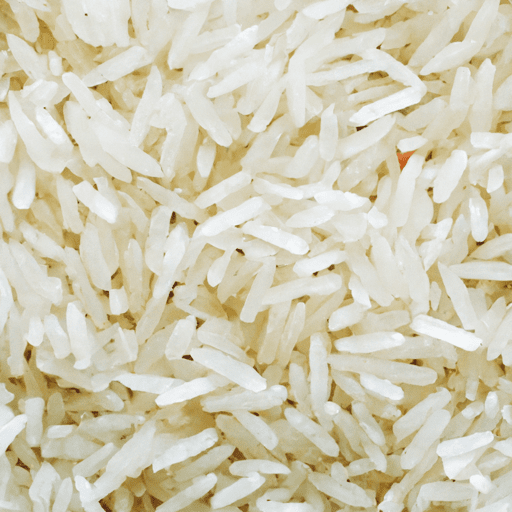All About Basmati Rice: Fragrant, Flavorful, and Nutritious
If you’re a fan of aromatic and delicious rice dishes, then basmati rice is undoubtedly a staple in your pantry. Known for its distinct fragrance and delicate flavor, basmati rice has been a culinary treasure for centuries. In this blog post, we’ll delve into the world of basmati rice, exploring its taste, common uses in cooking, nutritional value, and uncovering some interesting history and facts.
Taste and Fragrance
Basmati rice is renowned for its captivating aroma, often described as a mixture of nutty and floral scents. This unique fragrance can be attributed to the presence of a chemical compound called 2-acetyl-1-pyrroline, which is responsible for giving the rice its distinct smell. When cooked, basmati rice grains remain long and slender, with a tender texture that effortlessly separates. Its delicate flavor complements a wide range of dishes, making it an ideal choice for both savory and sweet recipes.
Common Uses in Cooking
Basmati rice, originating from the Indian subcontinent, is a crucial ingredient in numerous traditional dishes from India, Pakistan, and other South Asian countries. It serves as the perfect accompaniment to curries, biryanis, pilafs, and other flavorful main courses. Its ability to absorb aromatic spices effortlessly makes it a popular choice for preparing fried rice and pulao variations. Additionally, basmati rice can also be used to create delectable rice-based desserts like kheer (rice pudding), adding a subtle sweetness to the dish.
Nutritional Value
Apart from its delightful taste and fragrance, basmati rice also offers several nutritional benefits. Here’s a breakdown of its key nutrients:
Carbohydrates: Basmati rice is primarily a source of energy, owing to its high carbohydrate content. It serves as an excellent fuel for your body, providing sustained energy throughout the day.
Fiber: While basmati rice is not as high in fiber as brown rice, it still contains a decent amount, aiding in digestion and promoting overall gut health.
Protein: Basmati rice contains a small amount of protein, making it a suitable addition to vegetarian or vegan meals when combined with other protein sources.
Vitamins and Minerals: While not exceptionally rich in vitamins and minerals, basmati rice does offer a modest amount of B vitamins, such as thiamine and niacin, as well as minerals like magnesium and selenium.
History and Interesting Facts
Basmati rice has a long and fascinating history that dates back thousands of years. It is believed to have been cultivated in the foothills of the Himalayas, with the first recorded mention dating back to ancient Sanskrit texts. The word “basmati” itself translates to “the fragrant one” in Hindi and Urdu, paying homage to its enchanting aroma.
In 2016, basmati rice received the Geographical Indication (GI) tag, recognizing it as a unique product of the Indian subcontinent. This certification ensures that only specific varieties of rice grown under controlled conditions are labeled as “basmati,” further emphasizing the authenticity and quality of the rice.
It’s important to note that not all basmati rice is created equal. While the original and most authentic basmati rice comes from India and Pakistan, there are now regions like California, USA, and parts of Europe that cultivate their own variations. However, connoisseurs often argue that the traditional varieties from the Indian subcontinent offer the most superior flavor and fragrance.
In Conclusion
Basmati rice is more than just another grain; it’s a sensory experience that elevates your meals to new heights. Its alluring aroma, delicate flavor, and versatility in cooking make it a beloved ingredient in numerous cuisines around the world. Whether you’re preparing a hearty biryani, a refreshing pilaf, or a creamy rice pudding, basmati rice is sure to delight your taste buds and transport you to the vibrant corners of South Asia.
Basmati Rice
Origin: Basmati rice is a long-grain rice variety that is primarily grown in the Indian subcontinent, specifically in India and Pakistan. The word “basmati” means “fragrant” in Hindi.
Common Uses: Basmati rice is highly regarded for its aroma, delicate texture, and distinct nutty flavor. It is commonly used in a variety of dishes such as biryani, pilaf, pulao, and fried rice. It is also a staple in many Middle Eastern and Persian cuisines.
Nutritional Benefits: Basmati rice is a good source of carbohydrates and provides energy to the body. It is low in fat and cholesterol and contains no sodium. Basmati rice also contains small amounts of protein and fiber. Brown basmati rice is a healthier alternative as it retains the bran layer, providing more fiber and nutrients.
Unique Properties: Basmati rice is characterized by its long, slender grains that elongate further upon cooking. It has a unique fluffy texture and remains separate when cooked, making it ideal for biryanis and pilafs. The distinct fragrance of basmati rice is mainly due to the presence of a natural chemical compound called 2-acetyl-1-pyrroline.
Historical Significance: Basmati rice has a long history dating back thousands of years. It is mentioned in ancient Indian texts and has been cultivated for centuries in the foothills of the Himalayas. Basmati rice has been valued for its quality and aroma since ancient times and is often considered a symbol of prosperity and luxury in certain cultures.
Please note that while basmati rice is primarily associated with the Indian subcontinent, it is also cultivated in other parts of the world, including the United States, Australia, and some European countries. However, the traditional basmati rice varieties originating from the Indian subcontinent are considered to be the most prized and authentic.




Use the share button below if you liked it.
It makes me smile, when I see it.